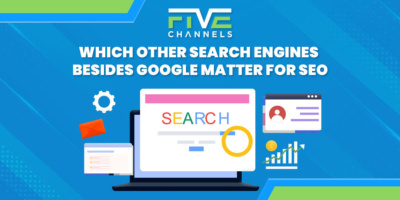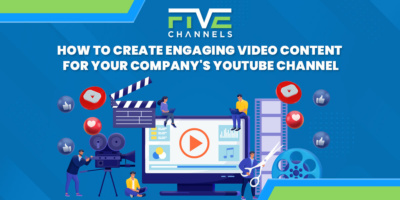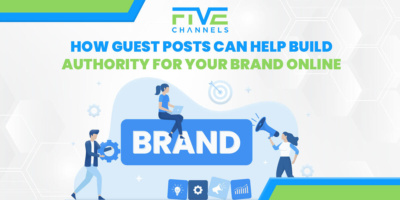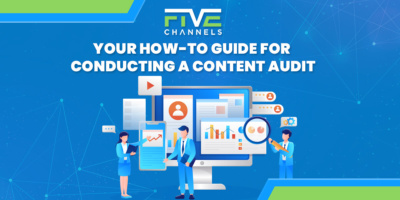Is customer acquisition at the top of your company’s game plan? If so, you’re not alone. It remains the number one concern for many agencies and organizations, and yet so many lack a solid strategy.
Even among those that do have a plan in place, 44 percent focus solely on acquisition, and only 18 percent on retention. What’s more, only 40 percent of companies and 30 percent of agencies concentrate equally on both.
Why is retention so necessary? Because it costs five times more to gain a new customer than it does to maintain an existing one.
That said, without acquisition there would be no retention, so you need to focus on both. You also need to be aware of some of the pitfalls that companies encounter attracting new customers.
Let’s dive into ten ways you can streamline and improve the effectiveness of your approach to client acquisition.
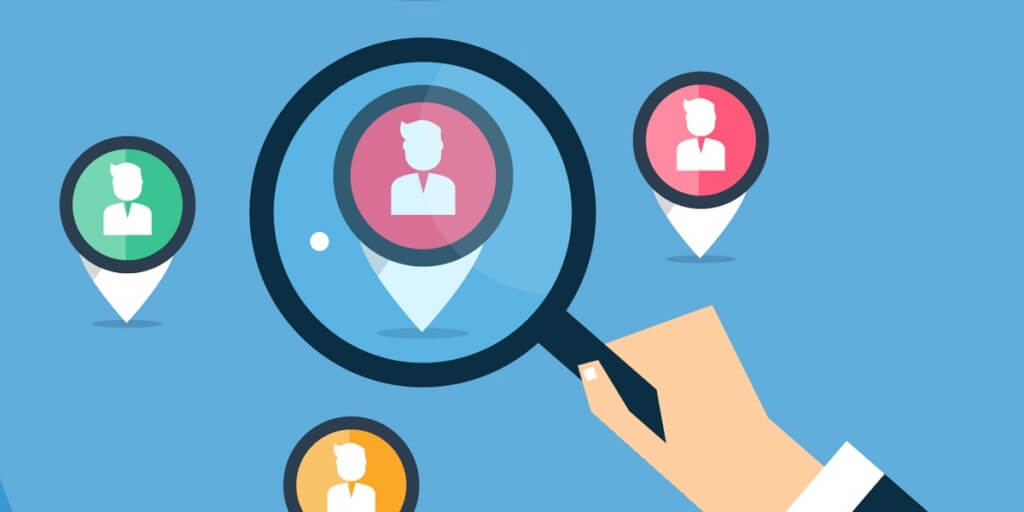
1. An Inaccurate Customer Acquisition Cost Formula
If you haven’t already crunched the numbers when it comes to customer acquisition cost (CAC) for your organization, it’s time to do so. Even if you have, revisit the figures to make sure they’re accurate.
What are some of the pitfalls that companies and agencies encounter when developing a customer acquisition cost formula? For one, many fail to include the cost of equipment, rent, and other items necessary to customer acquisition.
For example, does your marketing and sales team keep track of the cost of their equipment? How about the expense associated with rent, tools, and incentives?
You should also include all salaries for freelancers, consultants, part-timers, and employees associated with your marketing strategy. Make sure that goes for the cost of product development support, too.
If you’re not including everything it costs the company to facilitate excellent marketing work, then it’s time to head back to the drawing board with your calculator and start over.
2. Neglecting Customer Success Costs
Many agencies and companies employ a dedicated sales team tasked with various functions. These functions include everything from interacting and onboarding new customers to retaining them.
There are also members of your sales team that probably deal with re-engaging customers who may have lost interest, or who need to get re-introduced to your products and services. These are all critical aspects of your recapture strategy.
Of course, this raises an important question. Should you include all customer success and sales team costs in your company’s overall acquisition figure?
The short answer is yes. It makes sense to add these costs in your CAC calculations if you include customer recapture and retention in your customer acquisition process.
3. Overlooking the Length of the Customer Acquisition Process
Another major problem when it comes to calculating CAC is neglecting to account for the entire customer journey. In the B2C world, customer journeys are often fairly linear and short.
You can’t always say the same for high-end products or B2B markets, though. What’s more, no matter the actual length of the journey your customers make on the way to purchase, you need to understand the cost of that conversion window.
By having a thorough understanding of just how much you’re currently investing in customer acquisition and retention, you can take steps to increase efficiencies and streamline the process.
This strategy represents the fastest and best way to get started on the process of upping your marketing game.
4. Failing to Publish Engaging Content
Now that you understand how to figure out what you’re contributing in terms of CAC, it’s time to take a look at other ways that you might be inadvertently undermining your customer acquisition approach.
For example, let’s discuss the importance of engagement.
Many companies and agencies prove short-sighted when it comes to understanding the journey each of their customers takes before purchasing a product or service. They focus on basics such as website traffic and fail to see the bigger picture.
You see, the chances of a first-time customer stumbling across your site and making a purchase are few. Prospective customers need time to get to know your company and the products and services that it offers.
They need to understand what differentiates your organization from the competition. If you’re hesitant to get in on the content marketing scene, then you’re failing to engage your audience through content.
5. Not Getting to Know Your Ideal Customer
Remember that old marketing adage, “Know your customer?” Just because technology has advanced in recent years, and we live in the age of Big Data, doesn’t mean you can throw aside this rule.
To attract more customers, you need to think about developing relationships with them for the long term. You need to know them so well that the content you publish feels as though it speaks directly to them.
Of course, you can’t do that if you don’t take the time to get to know them.
Providing consistent content to your customers they find engaging is central to sales. After all, 70 percent of the buying experience involves how the customer perceives the way your organization has treated them.
6. Skipping Over the Creation of Buyer Personas
Buyer personas can seem like something that exists in the ether. They’re a bit like creating fictional characters, so it’s easy to assume you don’t need them. However, nothing could be further from the truth.
How do you create content that’s compelling to your customers and clients?
By understanding your customers inside and out. That includes knowing about their pain points, motivations, and what inspires them to make a purchase.
This approach involves in-depth meetings with your sales team, because they have plenty of experience communicating firsthand with your customers.
You should also request informal conversations with your customers and clients to get a better sense of what they want from your company. With this information in hand, you and your sales team can develop buyer personas.
These buyer personas will help you create digital content, including social media posts, that your audience will not only enjoy but find relevant
What’s more, consider crafting a community that focuses on the customer experience via your social media channels.
Most brands fail to encourage community among their customers, but it represents a high-level strategy that can support business-wide objectives. How can you get started with this?
Initiate dialogue with both leads and customers online. Encourage members of your marketing or sales team to pursue one-on-one interactions. This tactic might include offering expert advice, tips, tutorials, or all of the above.
7. Stay Within Your Budget
Just because you’re in the thick of aggressive customer acquisition doesn’t mean you have to burn through your marketing budget. Acquiring new clients is not synonymous with increased costs.
How do you know where to cut back and where to splurge on spending?
Start by monitoring your current spend so that you can cut out any inefficiencies or costs that haven’t yielded the results you’d like.
Remember that CAC we talked about earlier? Now’s the time to calculate a figure and explore places where you can cut back.
One crucial area where customer acquisition can spiral out of control is sales team recruiting. You don’t need a massive sales team to grow a scalable sales model.
8. Keeping Your Company’s Founders Out of the Sales Loop
Ask the founders of your company to stay involved in sales calls. After all, they’ll have a unique perspective and can prove more persuasive when it comes to selling their products and services.
Founders can also change the product and the message when needed. They can react to what they’re discovering in failed sales calls in a way that employees cannot. As a result, their input proves invaluable.
When it comes to developing a sales budget, here are some questions to keep in mind:
– What percentage of people who visit your website sign up?
– What percentage of customers who sign up make purchases?
– How much do your paying customers spend during their customer journey?
The answers to these questions will help you make informed decisions when it comes to areas of your sales budget that you could trim. You should also consider the application of automation software to enhance and streamline your sales cycle.
This approach will help you cut back while developing a proven, streamlined process to gain new customers consistently.
9. Failing to Educate Prospects and Customers
It’s time to get over the old sales model. Not only is it overrated, but it no longer satisfies today’s discerning customers.
Blame it on technology, but there’s no going back. Customers can learn about products with the click of a button. That includes watching explainer videos, reading reviews, and learning more about companies.
Today’s consumer doesn’t appreciate salesmanship. They want value and education. In other words, instead of asking your employees to sell to prospects and customers, urge them to educate your ideal audience.
What’s more, this is a win-win. By taking the education approach, you can position your company as an expert in your market. This approach will help you establish a relationship of trust with your audience while decreasing your bounce rate.
All solid sales relationships start with trust.
Besides educating your prospects and customers, you also need to offer social proof to validate your products and their value. After all, when people are weighing the pros and cons of a purchase, they look towards peers for behavioral guidance.
Consider this stat, seventy percent of consumers search out and read consumer reviews before buying a product. When it comes to product descriptions from manufacturers versus product reviews, product reviews win every time.
Consumers trust them 12 times more than any other form of content.
10. Neglecting to Build Relationships
Businesses no longer survive, let alone thrive, in isolation. They need to establish partnerships to craft a sustainable business model.
Partnerships allow you to leverage the audiences of other brands, creating strategic alliances that your business needs. By pursuing these partnerships, you can increase your market share while gaining additional human and financial resources to satisfy client demands.
Partnerships can get quite creative, so don’t be afraid to think outside of the box. For example, some companies now coordinate co-marketing campaigns with influencers.
Co-marketing between two or more entities comes with many benefits. These include shared results, audience, and brand awareness.
When it’s all said and done, attracting more prospects and leads don’t necessarily require reinventing the wheel. With the right marketing tactics, you can cut costs while still bringing in more customers.
How to Take Customer Acquisition to the Next Level
When it comes to customer acquisition, start by understanding how much you’re currently spending to bring in new leads and customers. From there, it’s time to explore ways to cut costs while honing your approach to bring in more business.
Besides calculating an accurate CAC based on your current processes, you need to reconsider your approach to sales. Start by spending some time getting to know your customers better by creating buyer personas.
Once you have this information, you can use this to create content that educates your audience rather than tries to sell to them. This approach will also inspire a sense of trust while positioning your company as an expert in your market.
Last but not least, don’t make the mistake of leaving your company’s founders out of the sales loop. Better than anyone else in the company, they can change your company’s message and upgrade its products as needed.
If you’re ready to take your company’s customer acquisition strategy to the next level, there’s no better time than the present. Contact us for a free digital marketing review.
Owner and Chief Marketing Officer, Jason Hall, and his team specialize in creating brand awareness / traffic and lead generation / marketing funnel and conversion optimization, while utilizing the appropriate marketing channels available within your industry. With diverse clients throughout the world, Jason's team is well connected within many industries to assist with your marketing strategies. With no long term contracts and various levels of service, Jason's team will increase the quality of your online traffic, leads, and sales.
About the author...
Located in the heart of the Emerald Coast - Destin, FL, founder and Chief Marketing Officer, Jason Hall, and his team specialize in creating brand awareness / traffic and lead generation / marketing funnel and conversion optimization / and PR campaigns, while utilizing the appropriate marketing channels available within your industry.
With diverse clients throughout the world, Jason's team is well connected within many industries to assist with your marketing strategies. With no long term contracts and various levels of service, Jason's team will increase the quality of your online traffic, leads, and sales.




